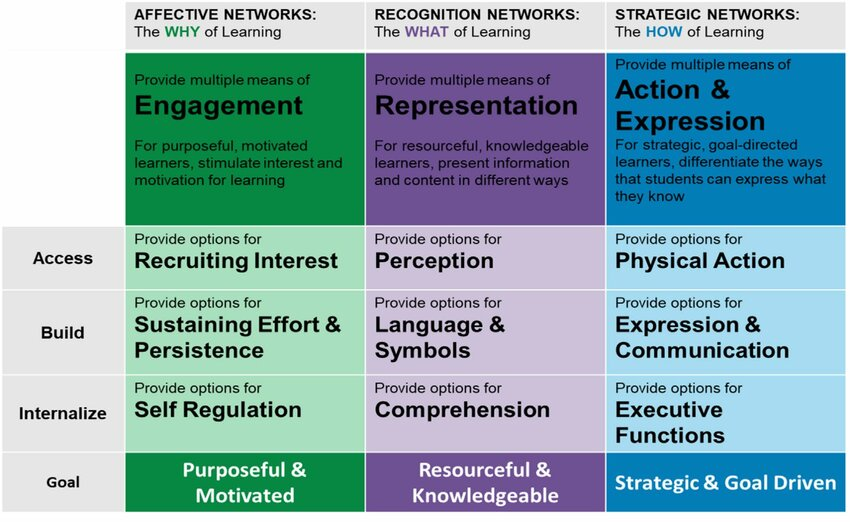Author:
When I was a freshman in college in China, I was assigned to a class with students who had good math scores because my math scores on the college entrance examination were very good. However, I knew that my actual ability was different from those students, and even much lower than theirs. The teacher did not care about this thing, and he only cared about whether most students understood and the overall teaching progress and quality. As a result, I totally could not keep up with the progress and did not understand most of the knowledge. My college experience showed me the consequences of an inflexible teaching approach. The lack of differentiated support made me feel lost and excluded, which shapes my belief in the importance of Universal Design for Learning (UDL) and inclusion. Education should accommodate diverse learners rather than favor the majority.
I might choose exploring various methods to help me have attention on my study, and I also try to express my requirements if I find something is not effective and suitable for me to learn. In a recent study, Griful-Freixenet et al. (2020) found that UDL encourages educators to design accessible curriculum and learning environments for the widest range of students.
As a future educator, I will ensure my classroom is inclusive by providing varied teaching materials and offering flexible assessment methods. However, the challenges may arise such as time constraints and curriculum demand. To overcome these challenges, I will incorporate technology and collaborate with colleagues to develop inclusive strategies. In one of specific strategies, I will break down complex concepts into smaller steps with guided practice. This will ensure all students, regardless of ability, receive the support they need to succeed.
References
Griful-Freixenet, J., Struyven, K., Vantieghem, W., & Gheyssens, E. (2020). Exploring the interrelationship between Universal Design for Learning (UDL) and Differentiated Instruction (DI): A systematic review. Educational Research Review, 29, 100306.https://doi.org/10.1016/j.edurev.2019.100306

Your reflection provides a thoughtful and insightful analysis of your college experience and its impact on your beliefs about inclusive education. You effectively highlight the consequences of a rigid teaching approach and your commitment to using Universal Design for Learning (UDL) to create an inclusive environment. Your recognition of the need for differentiated support is commendable and shows a deep understanding of how education should accommodate diverse learners.
How can educators effectively implement UDL in classrooms where time constraints and curriculum demands may limit the ability to provide individualized support for every student?
I appreciate you sharing your story as it effectively demonstrates how rigid teaching impacts students’ learning. It must have been annoying to be put in an advanced math class without any support, as it must have been hard to keep up. This emphasizes the value of inclusive education, which does not favor the majority but rather accommodates a diverse group of students. It’s admirable how you approach self-advocacy and experiment with various teaching strategies. A more encouraging learning environment will result from your dedication as a prospective teacher to implementing a variety of instructional resources, adaptable assessment procedures, and simplifying difficult ideas. Even though there are constraints like time limits and curricular requirements, technology and collaboration can assist get beyond them. Your commitment to promoting inclusivity will guarantee that every student gets the assistance they require to succeed.
Excellent discussion. Yes, time restraints are an important point especially when the student body is becoming more diverse. How do we juggle student needs with the demands of the curricula? What supports are in place for teachers?